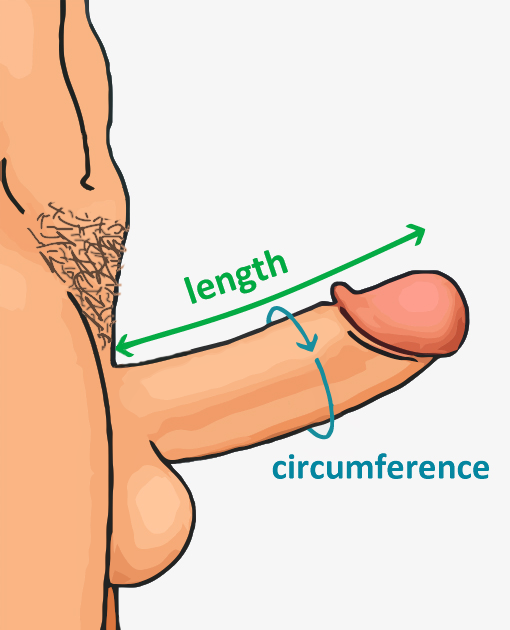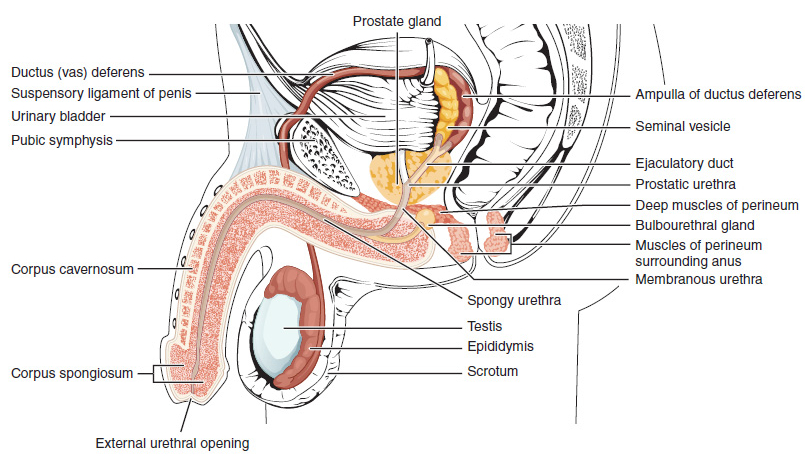|
Micropenis
A micropenis or microphallus is an unusually small Human penis, penis. A common criterion is a dorsal (measured on top) Human penis size, penile length of at least 2.5 standard deviations smaller than the mean human penis size for age. A micropenis is stretched penile length equal to or less than 1.9 Centimetre, cm (0.75 Inch, in) in term Infant, infants, and 9.3 cm (3.67 in) in adults. The condition is usually recognized shortly after Childbirth, birth. The term is most often used medically when the rest of the penis, scrotum, and perineum are without Ambiguous genitalia, ambiguity, such as hypospadias. Traditionally, a microphallus describes a micropenis with hypospadias. Micropenis incidence is about 1.5 in 10,000 male newborns in North America.ScienceDaily.com (2004).Surgeons Pinch More Than An Inch From The Arm To Rebuild A Micropenis" 6 Dec. 2004, retrieved 2 April 2012. Causes Of the abnormal conditions associated with micropenis, most are conditions of reduced prenata ... [...More Info...] [...Related Items...] OR: [Wikipedia] [Google] [Baidu] |
Human Penis Size
Human penis size varies on a number of measures, including length and circumference when flaccid and erect. Besides the natural variability of human penises in general, there are factors that lead to minor variations in a particular male, such as the level of arousal, time of day, ambient temperature, anxiety level, physical activity, and frequency of sexual activity. Compared to other primates, including large examples such as the gorilla, the human penis is thickest, both in absolute terms and relative to the rest of the body. Most human penis growth occurs in two stages: the first between infancy and the age of five; and then between about one year after the onset of puberty and, at the latest, approximately 17 years of age. Measurements vary, with studies that rely on self-measurement reporting a significantly higher average than those with a health professional measuring. A 2015 systematic review measured by health professionals rather than self-reporting, found an ... [...More Info...] [...Related Items...] OR: [Wikipedia] [Google] [Baidu] |
Growth Hormone Deficiency
Growth hormone deficiency (GHD), or hyposomatotropism, is a medical condition resulting from not enough growth hormone (GH). Generally the most noticeable symptom is that an individual attains a short height. Newborns may also present low blood sugar or a small penis size. In adults there may be decreased muscle mass, high cholesterol levels, or poor bone density. GHD can be present at birth or develop later in life. Causes may include genetics, trauma, infections, tumors, or radiation therapy. Genes that may be involved include '' GH1'', '' GHRHR'', or '' BTK''. In a third of cases no cause is apparent. The underlying mechanism generally involves problems with the pituitary gland. Some cases are associated with a lack of other pituitary hormones, in which case it is known as combined pituitary hormone deficiency. Diagnosis involves blood tests to measure growth hormone levels. Treatment is by growth hormone replacement using synthetic human growth hormone. The frequen ... [...More Info...] [...Related Items...] OR: [Wikipedia] [Google] [Baidu] |
Androgen Insensitivity Syndrome
Androgen insensitivity syndrome (AIS) is a condition involving the inability to respond to androgens, typically due to androgen receptor dysfunction. It affects 1 in 20,000 to 64,000 XY (karyotype, karyotypically male) births. The condition results in the partial or complete inability of Animal cell, cells to respond to androgens. This unresponsiveness can impair or prevent the Development of the reproductive system, development of male genitals, as well as impairing or preventing the development of male Secondary sex characteristics, secondary sexual characteristics at puberty. It does not significantly impair female genital or sexual development. The insensitivity to androgens is therefore clinically significant only when it occurs in genetic males, (i.e. individuals with a Y chromosome, Y-chromosome, or more specifically, an SRY, SRY gene). Clinical phenotypes in these individuals range from a typical body shape, male habitus with mild spermatogenesis, spermatogenic defect or re ... [...More Info...] [...Related Items...] OR: [Wikipedia] [Google] [Baidu] |
Human Penis
In Human body, human anatomy, the penis (; : penises or penes; from the Latin ''pēnis'', initially 'tail') is an external sex organ (intromittent organ) through which males urination, urinate and ejaculation, ejaculate, as Penis, on other animals. Together with the testes and surrounding structures, the penis functions as part of the male reproductive system. The main parts of the penis are the Root of penis, root, Body of penis, body, the epithelium of the penis, including the shaft skin, and the foreskin covering the glans penis, glans. The body of the penis is made up of three columns of tissue (biology), tissue: two Corpus cavernosum penis, corpora cavernosa on the dorsal side and corpus spongiosum penis, corpus spongiosum between them on the ventral side. The Urethra#Male, urethra passes through the prostate gland, where it is joined by the ejaculatory ducts, and then through the penis. The urethra goes across the corpus spongiosum and ends at the tip of the glans as the o ... [...More Info...] [...Related Items...] OR: [Wikipedia] [Google] [Baidu] |
17,20-lyase Deficiency
Isolated 17,20-lyase deficiency (ILD), also called isolated 17,20-desmolase deficiency, is a rare endocrine and autosomal recessive genetic disorder which is characterized by a complete or partial loss of 17,20-lyase activity and, in turn, impaired production of the androgen and estrogen sex steroids. The condition manifests itself as pseudohermaphroditism (partially or fully underdeveloped genitalia) in males, in whom it is considered to be a form of intersex, and, in both sexes, as a reduced or absent puberty/lack of development of secondary sexual characteristics, resulting in a somewhat childlike appearance in adulthood (if left untreated). Unlike the case of combined 17α-hydroxylase/17,20-lyase deficiency, isolated 17,20-lyase deficiency does not affect glucocorticoid production (or mineralocorticoid levels), and for that reason, does not result in adrenal hyperplasia or hypertension. Symptoms and signs The symptoms of isolated 17,20-lyase deficiency, in males, include pseu ... [...More Info...] [...Related Items...] OR: [Wikipedia] [Google] [Baidu] |
Hypospadias
Hypospadias is a common malformation in fetal development of the penis in which the urethra does not open from its usual location on the head of the penis. It is the second-most common birth defect of the male reproductive system, affecting about one of every 250 males at birth, although when including milder cases, is found in up to 4% of newborn males. Roughly 90% of cases are the less serious distal hypospadias, in which the urethral opening (the Urinary meatus, meatus) is on or near the head of the penis (Glans penis, glans). The remainder have proximal hypospadias, in which the meatus is all the way back on the shaft of the penis, near or within the scrotum. Shiny tissue or anything that typically forms the urethra instead extends from the meatus to the tip of the glans; this tissue is called the urethral plate. In most cases, the foreskin is less developed and does not wrap completely around the penis, leaving the underside of the glans uncovered. Also, a downward bending of ... [...More Info...] [...Related Items...] OR: [Wikipedia] [Google] [Baidu] |
Leydig Cell Hypoplasia
Leydig cell hypoplasia (or aplasia) (LCH), also known as Leydig cell agenesis, is a rare autosomal recessive genetic and endocrine syndrome affecting an estimated 1 in 1,000,000 individuals with XY chromosomes. It is characterized by an inability of the body to respond to luteinizing hormone (LH), a gonadotropin which is normally responsible for signaling Leydig cells of the testicles to produce testosterone and other androgen sex hormones. The condition manifests itself as pseudohermaphroditism (partially or fully underdeveloped genitalia), hypergonadotropic hypogonadism (decreased or lack of production of sex steroids by the gonads despite high circulating levels of gonadotropins), reduced or absent puberty (lack of development of secondary sexual characteristics, resulting in sexual infantilism if left untreated), and infertility. Leydig cell hypoplasia does not occur in people with XX chromosomes as they do not have either Leydig cells or testicles. However, the cause of the ... [...More Info...] [...Related Items...] OR: [Wikipedia] [Google] [Baidu] |
Ambiguous Genitalia
Intersex people are those born with any of several Sexual characteristics, sex characteristics, including chromosome patterns, gonads, or sex organ, genitals that, according to the Office of the United Nations High Commissioner for Human Rights, "do not fit typical binary notions of male or female bodies". Sex assignment at birth usually aligns with a child's external genitalia. The number of births with ambiguous genitals is in the range of 1:4,500–1:2,000 (0.02%–0.05%). Other conditions involve the development of atypical chromosomes, gonads, or hormones. The portion of the population that is intersex has been reported differently depending on which definition of intersex is used and which conditions are included. Estimates range from 0.018% (one in 5,500 births) to 1.7%. The difference centers on whether conditions in which chromosomal sex matches a phenotypic sex which is clearly identifiable as male or female, such as late onset congenital adrenal hyperplasia (1.5 ... [...More Info...] [...Related Items...] OR: [Wikipedia] [Google] [Baidu] |
Urology
Urology (from Ancient Greek, Greek wikt:οὖρον, οὖρον ''ouron'' "urine" and ''wiktionary:-logia, -logia'' "study of"), also known as genitourinary surgery, is the branch of medicine that focuses on surgical and medical diseases of the urinary system and the reproductive organs. Organs under the domain of urology include the kidneys, adrenal glands, ureters, urinary bladder, urethra, and the male reproductive organs (testes, epididymis, epididymides, vas deferens, vasa deferentia, seminal vesicles, prostate, and Human penis, penis). The urinary and reproductive tracts are closely linked, and disorders of one often affect the other. Thus a major spectrum of the conditions managed in urology exists under the domain of genitourinary disorders. Urology combines the management of medical (i.e., non-surgical) conditions, such as urinary-tract infections and benign prostatic hyperplasia, with the management of surgical conditions such as bladder or prostate cancer, kidney st ... [...More Info...] [...Related Items...] OR: [Wikipedia] [Google] [Baidu] |
Gonadotropin
Gonadotropins are glycoprotein hormones secreted by gonadotropic cells of the anterior pituitary of vertebrates. They are central to the complex endocrine system that regulates normal growth, sexual development, and reproductive function. The hormone family includes the mammalian hormones follicle-stimulating hormone (FSH) and luteinizing hormone (LH), the placental/ chorionic gonadotropins, human chorionic gonadotropin (hCG) and equine chorionic gonadotropin (eCG), as well as at least two forms of fish gonadotropins. LH and FSH are secreted by the anterior pituitary gland, while hCG and eCG are secreted by the placenta in pregnant women and mares, respectively. The gonadotropins act on the gonads, controlling gamete and sex hormone production. Gonadotropin is sometimes abbreviated ''Gn''. The alternative spelling ''gonadotrophin'' which inaccurately implies a nourishing mechanism is also used. There are various preparations of gonadotropins for therapeutic use, main ... [...More Info...] [...Related Items...] OR: [Wikipedia] [Google] [Baidu] |




